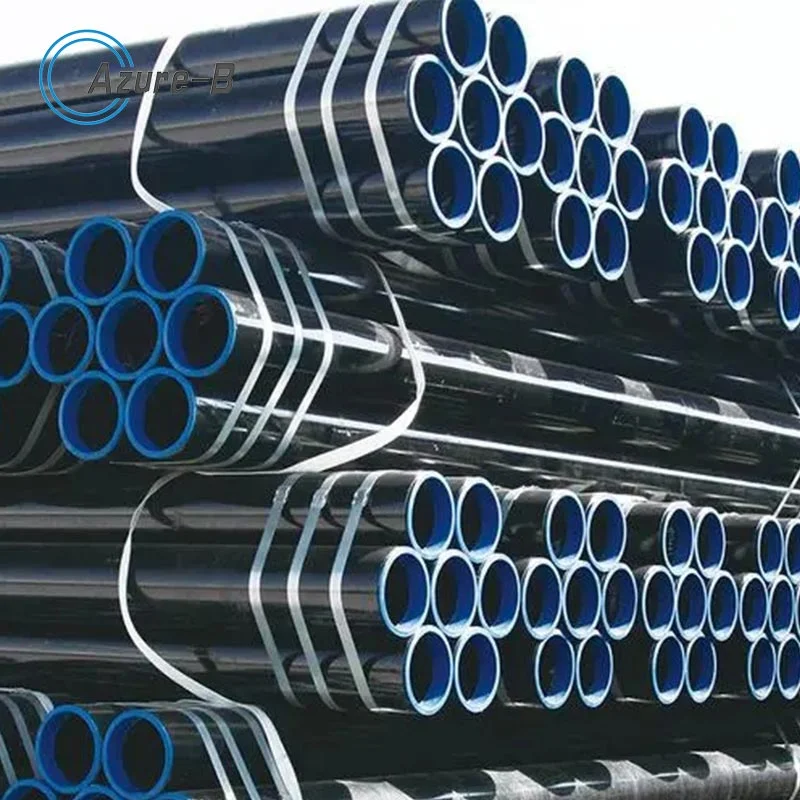The Intricate World of Carbon Steel Fittings: A Journey Into the Backbone of Modern Industry
Carbon steel is one of the most versatile and widely used materials in industrial piping systems today. From chemical plants to oil refineries, power plants to wastewater treatment facilities, carbon steel fittings and pipes form the backbone of fluid transfer operations. Though often overlooked, these unassuming cylindrical pieces of metal play a crucial role in keeping our modern industrial world running smoothly.
In this blog, we will explore the world of carbon steel fittings, from their manufacturing and key properties to their extensive applications across industries. We will uncover what makes this material so popular and take a peek inside the intricate carbon steel supply chain that brings fittings from the factory floor to end use installations. By the end, you will gain an appreciation for the engineering marvel that is the common carbon steel fitting.
How Carbon Steel Fittings Are Made
Carbon steel fittings include elbows, tees, couplings, caps, and reducers that are used to connect straight runs of pipe. Fittings direct fluid flow around corners and branch off piping into different directions. Though they may look simple on the outside, quality carbon steel fittings are engineered products made with care and precision.
The manufacturing process starts with pipes or tubes of carbon steel, which contains around 0.25% carbon by weight. The steel is first formed into the desired shape on large machining equipment. Fittings are shaped using methods like casting, molding, extrusion, or forming on a press brake. Specialized machines taper pipe ends and cut threads so fittings can connect to other components.
Once shaped, fittings go through additional finishing steps. Surfaces are smoothed and beveled, then inspected for any imperfections. Fittings are often galvanized or coated to prevent corrosion and enhance longevity. The finishing touches turn raw steel forms into precision carbon steel fittings ready for installation.

Key Properties of Carbon Steel Fittings
Carbon steel is such a popular fitting material because it strikes an optimal balance between cost, chemical and temperature resistance, durability, and machinability. Key properties that make carbon steel a top fitting choice include:
-Cost effectiveness – Carbon steel is economical, especially compared to alloy steel and stainless steel options. This makes it ideal for large projects.
-Good machinability – The low carbon content allows it to be machined, bent, and worked with relative ease. Fittings can be manufactured efficiently.
-Strong and rigid – Carbon steel has high strength and stiffness values. Fittings can withstand high pressures and mechanical loads.
-Temperature resistance – Fittings can operate in temperatures up to 700°F without compromising strength. Suitable for many hot fluid applications.
-Corrosion resistance – Has moderate atmospheric corrosion resistance compared to other steels. Protective coatings further prevent rust and oxidation.
Carbon steel finds the sweet spot between performance and cost. Combined with good manufacturability, it’s easy to see why it is the go-to choice for the majority of industrial piping applications.
Applications Across Industries
From the Alaska pipeline to local water distribution systems, carbon steel fittings quietly play an essential role. Here are some of their top applications:
Oil & Gas – Transports oil, natural gas, fuels, and other hydrocarbons. Critical for upstream, midstream, and downstream processes.
Chemical – Used extensively in chemical plants, tanks, and processing equipment. Durable against harsh chemicals.
Water & Wastewater – Water treatment and distribution depends on carbon steel piping. Also handles abrasive slurries.
Power – Fittings in power plants operate at extremely high pressures and temperatures.
HVAC & Plumbing – Used for heating, cooling, and general services in large buildings.
Fire Protection – Specialized systems rely on carbon steel for reliable fire suppression.
Though it may not earn the glory, carbon steel enables key processes and services that our society depends on. It provides the conduit for energy, water, and essential chemicals across cities and countrysides worldwide.
The Carbon Steel Supply Chain
Having explored carbon steel fittings in depth, you may be wondering how they make their way into industrial facilities. The journey from raw material to installed fitting is made possible by the interconnected carbon steel supply chain.
It starts with steel manufacturers who melt scrap metal and transform it into steel pipes and tubes. Machining companies purchase the stock steel to fabricate into fittings. Local distributors buy fittings in bulk and sell smaller quantities to end users. Engineering contractors source the necessary fittings for each project and manage logistics. Finally, pipes and fittings come together at industrial plants during new construction or retrofits.
Quality checks and testing occur throughout the supply chain to ensure fittings meet demanding industry standards. Traceability and proper documentation are critical for such a crucial material. With so many touchpoints, you begin to appreciate the coordinated effort required before fittings become part of a functioning fluid system.
When you look at a piping diagram or walk through an industrial facility, those small but ubiquitous carbon steel fittings should gain new meaning. Each one represents an engineered solution, carefully manufactured to enable the infrastructure we rely on every day. Carbon steel strike the ideal balance of strength, temperature resistance, machinability, and cost – qualities which make the material a backbone of modern industry.
So the next time you come across a carbon steel fitting, remember there is more than meets the eye. Behind its unglamorous facade lies a product pedigree made possible through clever material science, precision manufacturing, and supply chain logistics. Much like carbon steel itself, the fitting’s beauty lies in its simplicity and functionality. The intricate carbon steel supply chain comes together to produce an elegant and engineered solution for critical industrial applications.

